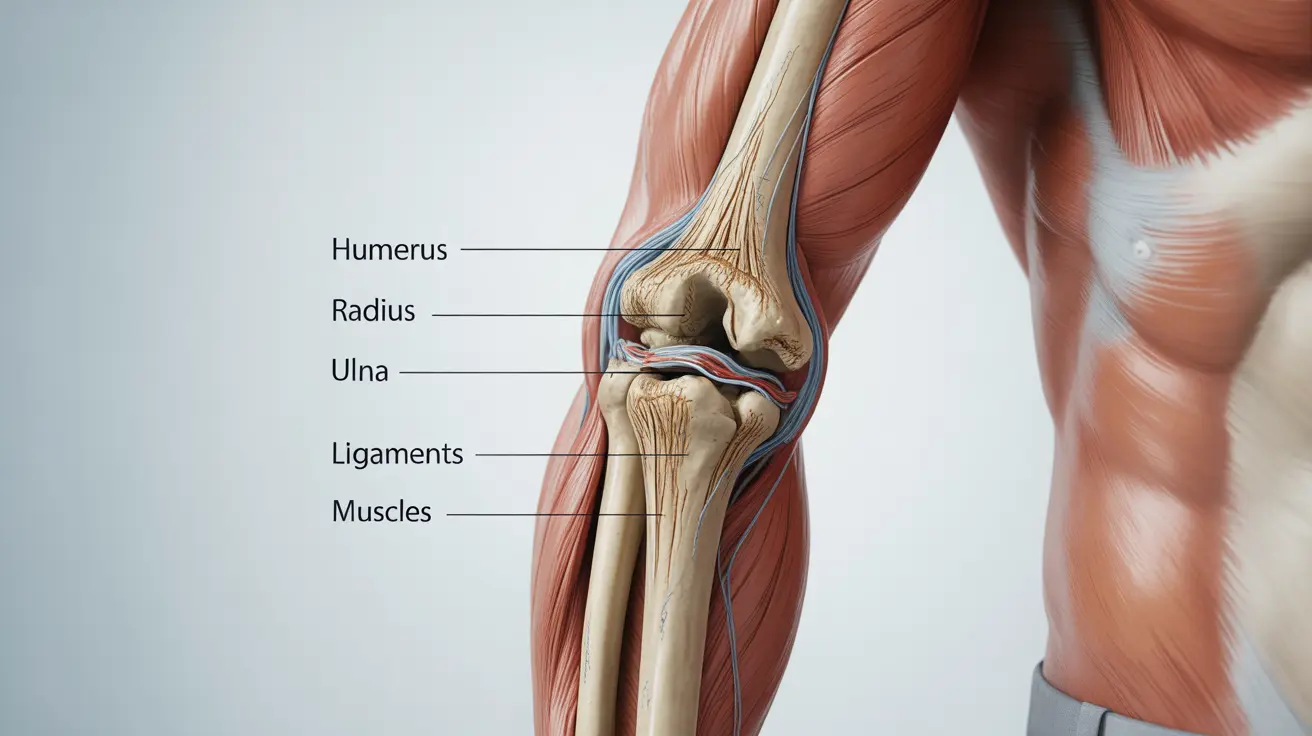A dislocated elbow occurs when the bones that form the elbow joint become separated or knocked out of their normal alignment. This painful injury typically results from falls, sports injuries, or accidents, and requires immediate medical attention. Understanding the signs, proper immediate response, and treatment options is crucial for optimal recovery and preventing long-term complications.
While elbow dislocations can happen to anyone, they're particularly common in athletes and active individuals who participate in contact sports or activities with a high risk of falling. Quick recognition and proper medical care are essential for preventing permanent damage and ensuring the best possible outcome.
Signs and Symptoms of a Dislocated Elbow
Recognizing the symptoms of a dislocated elbow is crucial for seeking timely medical attention. Common signs include:
- Severe pain in and around the elbow joint
- Visible deformity or obvious displacement of the elbow
- Swelling and bruising around the joint
- Limited or impossible movement of the elbow
- Numbness or tingling in the hand or forearm
- Weakness in the affected arm
Immediate Response to an Elbow Dislocation
When an elbow dislocation occurs, taking the right immediate actions can prevent further injury and complications:
- Immobilize the injured arm in its current position
- Apply ice to reduce swelling
- Avoid attempting to relocate the joint yourself
- Seek emergency medical care immediately
- Take over-the-counter pain medication if advised by a healthcare provider
Medical Treatment Options
Treatment for a dislocated elbow typically involves several steps, beginning with immediate care and extending through rehabilitation:
Initial Treatment
The first priority is repositioning the joint, known as reduction. This procedure must be performed by a qualified healthcare professional, usually in an emergency room setting. The patient may receive pain medication or sedation before the procedure.
Post-Reduction Care
After the joint is relocated, treatment typically includes:
- Immobilization with a splint or sling
- Regular ice application
- Pain management
- Gradual return to movement under medical supervision
- Monitoring for potential complications
Surgical Intervention
While many elbow dislocations can be treated without surgery, certain circumstances may require surgical intervention:
- Severe joint instability
- Associated fractures
- Damaged blood vessels or nerves
- Failed conservative treatment
- Complex dislocations with tissue damage
Physical Therapy and Rehabilitation
Rehabilitation is crucial for restoring function and preventing future problems. A comprehensive physical therapy program typically includes:
- Controlled range-of-motion exercises
- Strength training for surrounding muscles
- Flexibility exercises
- Activity modification training
- Education on preventing re-injury
Long-term Recovery and Prevention
Recovery from an elbow dislocation requires patience and dedication to rehabilitation. Most patients can expect:
- A recovery period of several weeks to months
- Gradual return to normal activities
- Potential need for ongoing exercises
- Possible long-term joint protection measures
Frequently Asked Questions
What causes a dislocated elbow and how can I recognize its symptoms? A dislocated elbow typically results from falls on an outstretched hand, direct trauma, or sports injuries. Key symptoms include severe pain, visible deformity, swelling, and inability to bend or straighten the elbow.
What should I do immediately if I suspect I have a dislocated elbow? Immediately immobilize the arm in its current position, apply ice to reduce swelling, and seek emergency medical care. Never attempt to relocate the joint yourself, as this could cause additional damage.
How is a dislocated elbow treated and what does recovery involve? Treatment begins with joint reduction by a medical professional, followed by immobilization, pain management, and a structured rehabilitation program. Recovery typically involves several weeks of restricted activity followed by progressive physical therapy.
When is surgery necessary for a dislocated elbow? Surgery may be necessary when there are associated fractures, severe joint instability, vascular or nerve damage, or when conservative treatment fails to maintain proper joint alignment.
How can physical therapy help after an elbow dislocation and how soon should it start? Physical therapy helps restore range of motion, strength, and function. It typically begins with gentle exercises once the initial healing phase is complete, usually within a few weeks of the injury, under the guidance of a healthcare provider.




